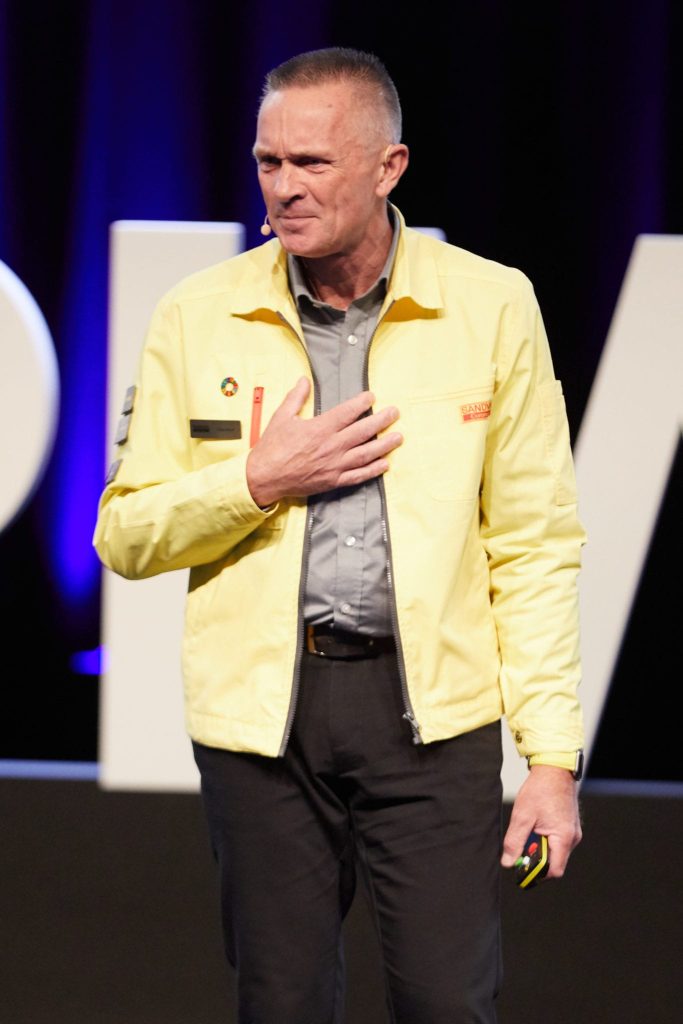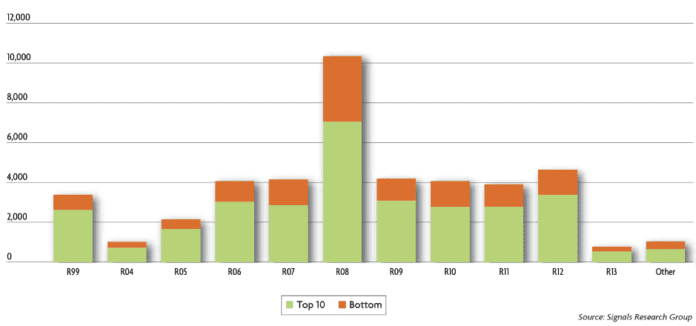Note, this is continued from a previous article, called: ‘Greta dislikes you, but we like Greta’ – Sandvik on industrial revolution and the smartest little tool-house in Sweden. Go here to read the first instalment.
The smartest factory in Sweden is a couple of hours north of Stockholm, in the small town of Gimo. “It’s in the middle of nowhere. If you blink, you’ll miss it. But for us, it’s the centre of the world,” says Claes Nord, experience specialist at Sandvik Coromant, the industrial tooling division of Swedish manufacturer Sandvik, and the factory’s owner.
Sandvik Cormorant has been rated as a ‘lighthouse’ smart factory by McKinsey & Company in an assessment for the World Economic Forum. It is the only factory in Sweden to gain the recognition – and one of just nine facilities in Europe and one of just 16 globally.
Speaking during an offbeat presentation at PI World in Gothenburg last month, Nord says his company develops 2,500 new products each year, and six new drill inserts each day. It is about to unveil a new drill.
“We’re excited about that,” he says, lowering his voice for effect. “Finally, there’s a new drill coming to market. I mean, how hard can it be? It’s about making a hole.” But he turns serious; this drill is special, he says. “We don’t sell the drill, we sell the hole.”

Airbus asked Sandvik Cormorant for a faster drill, he explained. Sandvik has produced one, which is “one second faster than the competitor”. The thing is there are lots of holes in aeroplanes; Airbus drills 2.5 million in its A380 ‘Big Bird’, says Nord. Even if that model is discontinued, the saving is significant in aircraft production, whatever the craft.
“Times two and a half million holes – that’s a lot of time.” Airbus, as we have written, has its own line in smart operations. “The driller has to drill, but it also has to compute,” it says. It also has to be made differently, reckons Nord. “We need to figure out new ways to make things because it’s going to change,” he says.
For Sandvik, as a manufacturer, new ways are available, says Nord, spiralling into an exhortation about additive manufacturing. “We need to start printing things,” he says.
He reels off a list of Sandvik’s recent print jobs: the first printed milling counter, made out of titanium; the first printed industrial diamond; a smash-proof guitar for Swedish metal god Yngwie Malmsteen. “He can’t destroy that one,” says Nord. “We printed it out of stainless steel and titanium. Just to prove we could.”
He adds: “It’s going super fast. We have to reinvent ourselves. And with printing, it’s only your imagination that limits you.
But Sandvik, and Sandvik Cormorant as its blue-riband operation, pans out from the hole, and the production line, to take a fuller view of its operations.
Industrial sustainability and operational efficiency go together, and expand into other domains – reverberating through the supply chain, but also through the factory itself. In the absence of a global standard for measuring how green production is, Sandvik Cormorant devised a project in 2017 called Green Factory and Green Facilities on the back of publication of the UN’s SDGs.
Essentially, it created an Excel spreadsheet to score itself for safety (“our top priority”), emissions, waste, and production, as well as certain HR factors. It has put in place other changes: its toilets flush with pond water; its company cars are electric; it is mixing “water, ammonium, and hot air” to heat/cool its three Gimo factories; their energy is being recycled to heat homes in the town.
At the same time, its progressiveness is most keenly felt in its core operations. The Gimo setup was rated by McKinsey & Company on four counts: for its utilisation of parametric design, digital thread, business intelligence (BI) and analytics, and real-time process control.
But it has been using data analytics in product design for 25 years. “We invented that,” says Nord. It has threaded its production cycle with digital modelling for 15 years, already, and been working with BI tools for a couple, at least. Only the real-time process control is relatively new, implemented during the past year.
In Gothenburg, Nord tips the company hat to OSIsoft, as well, whose PI System has underpinned its data gathering since 2010, and kicked off its sensing programme. “The world wasn’t talking about Industry 4.0 in 2010,” he says.
“But these are €4 million machines, and sometimes they break – so we equipped them with sensors so we could fix them before they broke.” The company can interrogate historical data, as well, and run the findings back into the design and production processes, as required. “I can connect all of my production in the whole world – the machines, the plants, the people,” says Nord.
Sandvik Cormorant has 500 CNC (computer numerical control) machines and 400 robots in Gimo. It collects 400 million data points each day, says Nord. “It’s insane. In the future, we will laugh about it. ‘Why on earth did you collect so much?’” But it collects because it can, he explains; to save up for a rainy day, when it finds reason to re-run the maths with new discoveries in mind.
But it processes 1,200 analyses per second, just on the data it uses. Its business drivers are to keep inventory moving, and to maximise finite production resources.
“Today, when you speak about manufacturing, it’s a lot about batching. The whole world woke up when Lehman Brothers went bankrupt. No one wants inventory. It’s all about just-in-time, small batches.”
He adds: “It’s also a lot about resources. We only have 8,760 hours per year – that’s 24/7/365. You need to utilise people and machines as well as possible.” This last part is the key to his Gothenburg address. For Nord, talk of machines taking over is guff.
To be continued…

